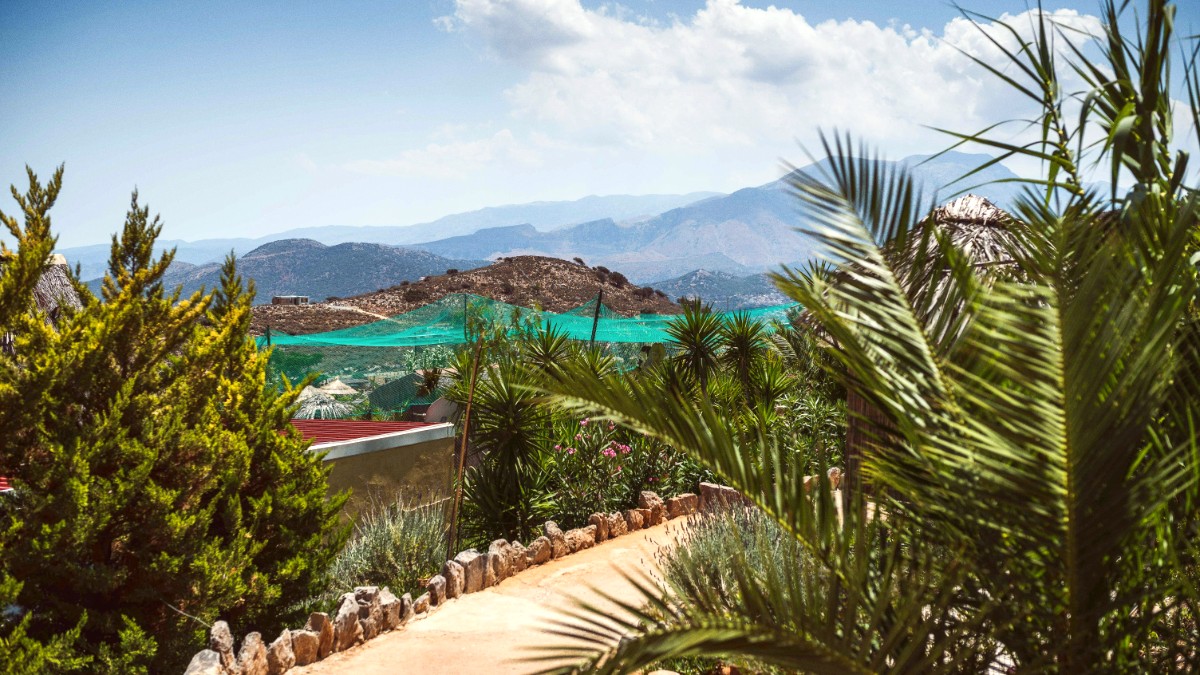
Greece
Rethymno's skyline and streetscapes feature several unmistakable landmarks that define its historical character.
From ancient fortresses to tranquil beaches, this section guides you through the must-see sights and offers insights for an enriching visit.
These sites reveal Rethymno's layered history beyond its major landmarks.
A short distance west of Rethymno city. It is a quieter, more tranquil experience than the bustling city beach. A peaceful setting for swimming and relaxation, often with fewer crowds.
A charming, traditional village nestled in the mountains south of Rethymno. Famous for its picturesque Venetian fountain with 25 lion heads spouting cool spring water. Surrounded by lush greenery, it is a pleasant stop on a drive through the interior.
A smaller and more accessible gorge than the famous Samaria, close to Rethymno. It is a pleasant and relatively easy hike along a river, leading to a small church built into a rock face. A traditional taverna at the entrance provides refreshments after your walk.
This traditional village is famous for its long history of pottery production. Located in the Rethymno region, Margarites has numerous workshops where you can observe potters at work, using traditional methods, and purchase unique handmade ceramics.
Just outside Rethymno city, Mili Gorge is a lush, green valley dotted with the ruins of abandoned watermills and a deserted village. It is a peaceful and relatively easy hike through a verdant landscape, following a stream. This is an opportunity for a tranquil escape into nature close to the city.
Maximizing your sightseeing in Rethymno has smart planning and local insight.
Visit the Fortezza early morning. Avoids crowds and heat. Best light for photography. Panoramic views.
Explore the Old Town without a fixed plan. Discover hidden courtyards and artisan shops. Enjoy evening lights.
Allocate 1-2 hours for Archaeological and Folk Art Museums. Check opening hours, they can vary seasonally.
Enjoy the Venetian Harbour in late afternoon or evening. Have coffee or a meal at a taverna. Popular for leisurely walks.
Plan a half-day trip to Arkadi Monastery. Rent a car or take an organized tour. Significant time to explore its history.
Dedicate time to Rethymno Beach for swimming and water sports. The promenade is good for walking or cycling.
Many Old Town attractions are walkable. For sites outside the city, a rental car or organized tours are best. Public buses serve some coastal areas.
Consider guided tours for historical sites like the Fortezza or Arkadi Monastery for deeper historical context. Local guides share insights. Consider booking tours through GetYourGuide for convenience.
Check official websites or local tourism offices for current opening hours and entrance fees, as these change seasonally.
Rethymno Old Town has cobblestone streets and steps, which some visitors with mobility limitations might find challenging. The beachfront area is generally flat and more accessible.
These suggestions cater to different interests and durations.
Focus on Rethymno's historical core for a concentrated experience.
Expand on day one with beachfront relaxation and further cultural insights.
Add an excursion to a natural or historical site outside the city.
For longer visits, mix and match activities or explore more of Crete.
Beyond the main attractions, these tips enrich your Rethymno experience.
Venture into nearby traditional villages for an authentic glimpse into Cretan life.
Discover quieter beaches and picturesque coves away from the main tourist hubs.
Visit the central market and specialty shops for authentic Cretan goods.
These items make great souvenirs or gifts.
Dive into Crete's history and culture through its smaller museums.
Each museum offers an unique perspective on the island's heritage.
The best way to experience Crete is through its people.
Cretan hospitality (`filoxenia`) is a cherished tradition.
Crete has intense sun. Use high SPF sunscreen, wear hats, and seek shade, especially during midday hours.
Drink plenty of water, especially during summer and when active. Tap water is generally safe to drink in Rethymno, but bottled water is widely available.
Comfortable walking shoes are a good idea for exploring the Old Town's cobblestones and for any hiking excursions.
Rethymno is a destination that balances history, culture, and natural beauty.
Its charm and authentic spirit make it a truly memorable part of any Crete trip.